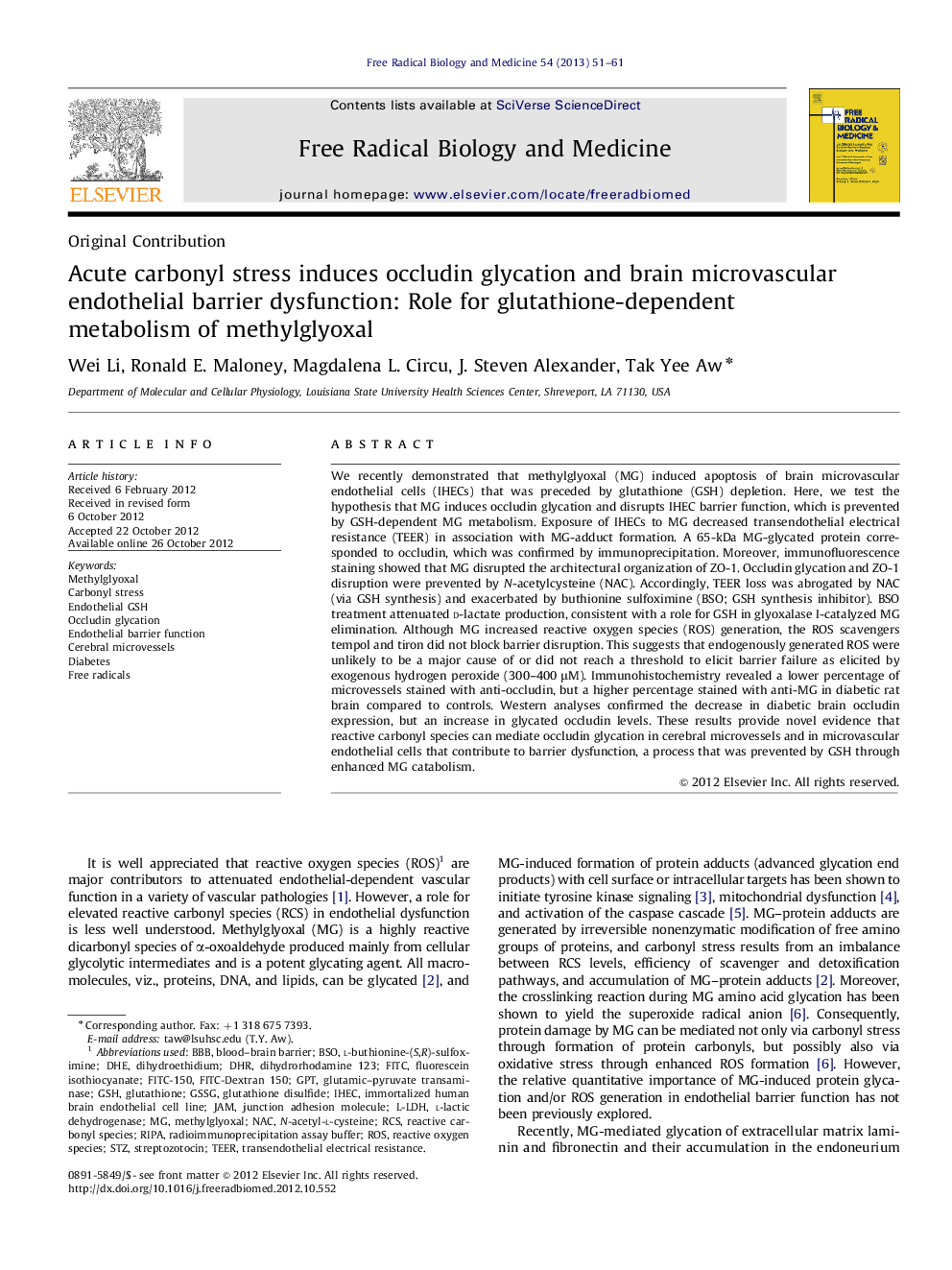| کد مقاله | کد نشریه | سال انتشار | مقاله انگلیسی | نسخه تمام متن |
|---|---|---|---|---|
| 1908697 | 1534988 | 2013 | 11 صفحه PDF | دانلود رایگان |

We recently demonstrated that methylglyoxal (MG) induced apoptosis of brain microvascular endothelial cells (IHECs) that was preceded by glutathione (GSH) depletion. Here, we test the hypothesis that MG induces occludin glycation and disrupts IHEC barrier function, which is prevented by GSH-dependent MG metabolism. Exposure of IHECs to MG decreased transendothelial electrical resistance (TEER) in association with MG-adduct formation. A 65-kDa MG-glycated protein corresponded to occludin, which was confirmed by immunoprecipitation. Moreover, immunofluorescence staining showed that MG disrupted the architectural organization of ZO-1. Occludin glycation and ZO-1 disruption were prevented by N-acetylcysteine (NAC). Accordingly, TEER loss was abrogated by NAC (via GSH synthesis) and exacerbated by buthionine sulfoximine (BSO; GSH synthesis inhibitor). BSO treatment attenuated d-lactate production, consistent with a role for GSH in glyoxalase I-catalyzed MG elimination. Although MG increased reactive oxygen species (ROS) generation, the ROS scavengers tempol and tiron did not block barrier disruption. This suggests that endogenously generated ROS were unlikely to be a major cause of or did not reach a threshold to elicit barrier failure as elicited by exogenous hydrogen peroxide (300–400 μM). Immunohistochemistry revealed a lower percentage of microvessels stained with anti-occludin, but a higher percentage stained with anti-MG in diabetic rat brain compared to controls. Western analyses confirmed the decrease in diabetic brain occludin expression, but an increase in glycated occludin levels. These results provide novel evidence that reactive carbonyl species can mediate occludin glycation in cerebral microvessels and in microvascular endothelial cells that contribute to barrier dysfunction, a process that was prevented by GSH through enhanced MG catabolism.
► Methylglyoxal (MG) mediates brain microvascular endothelial barrier dysfunction.
► MG–occludin adduct formation and cellular GSH loss precede loss of barrier integrity.
► NAC preserves barrier function via restored GSH and attenuated MG-adduct formation.
► GSH promotes glyoxalase I-catalyzed metabolism of MG.
► Diabetic brain exhibits decreased occludin but increased glycated occludin levels.
Journal: Free Radical Biology and Medicine - Volume 54, January 2013, Pages 51–61